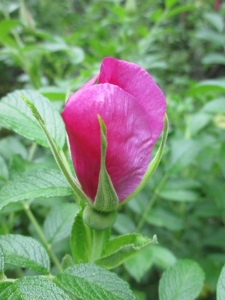 June 3rd the first Rosa ragosa opened. I’m grateful to be able to grow these most fragrant roses so that I can continue making rose petal jam, a tradition I started while living in Provincetown, the tip of Cape Cod, in the 1970’s. Instead of bicycling ten miles to the outer beaches to collect wild Rosa ragosas, I now walk out to my back deck, down a few stairs to a mini rose grove, blissfully convenient and divinely aromatic.
June 3rd the first Rosa ragosa opened. I’m grateful to be able to grow these most fragrant roses so that I can continue making rose petal jam, a tradition I started while living in Provincetown, the tip of Cape Cod, in the 1970’s. Instead of bicycling ten miles to the outer beaches to collect wild Rosa ragosas, I now walk out to my back deck, down a few stairs to a mini rose grove, blissfully convenient and divinely aromatic. 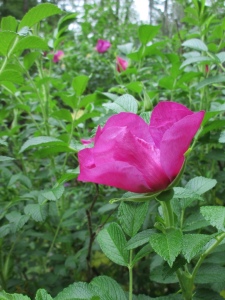
What stays in my memory is the unique smell of the briny sea intertwined with the aroma of thousands of Rosa ragosa bushes covering large dunes as far as one could see in either direction.
Peonies bloom for only a short time, but their fragrance and utter feminine grace add to springtime splendor. Ants have a special relationship with peonies; they eat the hard outer shell of the tight bud 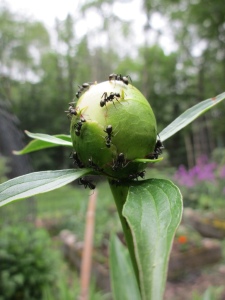 so that the flower can finally burst open in all its glory.
so that the flower can finally burst open in all its glory.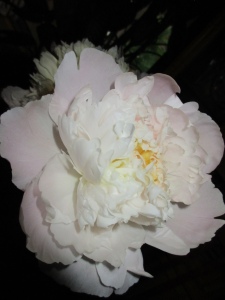
I’ve seen only a few dragonflies, but have many toads of all sizes and design on the property. We stare at each other until I tell ‘em I won’t kiss ‘em, and then we both move on.
The late lilacs are almost finished blooming, another rather short-lived fragrant beauty. Both the black swallowtail 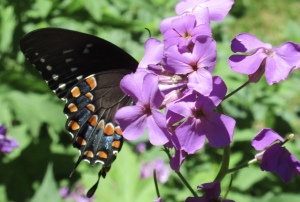 and the Easter tiger swallowtail enjoy its nectar:
and the Easter tiger swallowtail enjoy its nectar: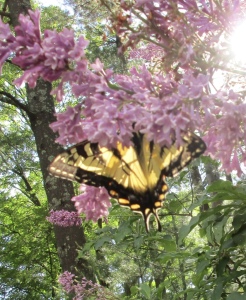
Such a rainy spring interspersed with perfect days of low humidity, temperature in the 70’s so that I can work in the garden for up to eleven hours, lost in its wonder while inching my way around three acres of garden work. So much has to be done before the heat and humidity slow me down considerably.
This unusual little beauty, whose name I do not know, was nectaring on a dandelion and sharing it with an ant.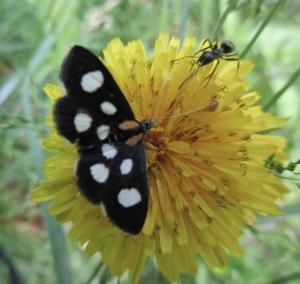
Rain, rain today then sunshine for the first day of summer. I’m sure if I sat in front of any plant I could watch it grow, but there is far too much to do.
During a break between heavy rain today, June 20th, I went for a walk. Among the many milkweeds, two plants had bite marks and, sure enough, I found two monarch caterpillars munching intently, one on each plant. I hadn’t seen the monarchs who apparently visited the gardens to lay their eggs.








